How to condition score ewes at weaning
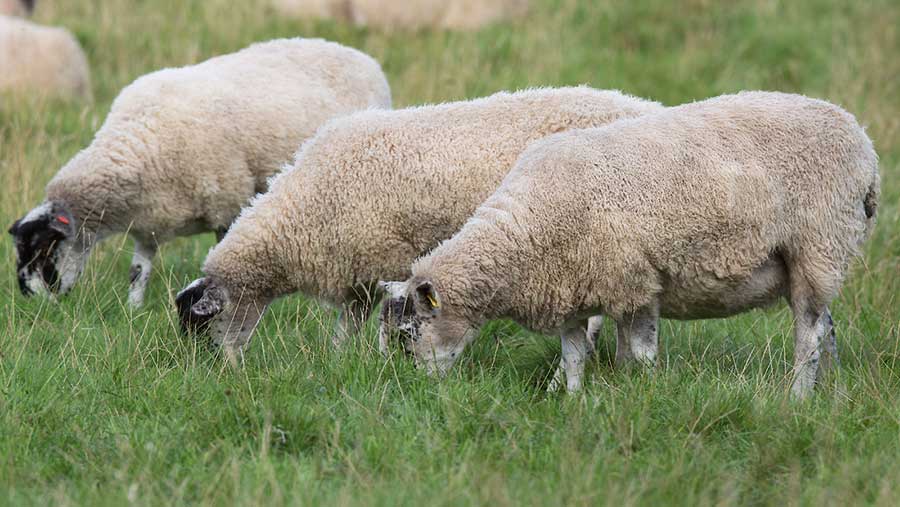 © Tim Scrivener
© Tim Scrivener As farmers begin weaning and drying off ewes, it’s an ideal time to body condition score (BCS) ewes, says Eblex beef and sheep scientist Liz Genever.
“The dry period is the best opportunity to get ewes on target, as it is more difficult to alter body condition score when they are in-lamb. There are a variety of reasons for culling, so year-round records can be very useful,” she adds.
Reasons for culling
- Low BCS and inability to regain condition before tupping
- Multiple treatments for lameness
- Lumps in udder or damaged teats
- Thin or missing teeth
- Poor lambing, prolapse or poor mothering ability
- Poor lamb growth rates.
How to body condition score
Assessments are quick and easy to make by placing a hand over and around the backbone and loin area behind the last rib to feel the amount of fat cover and muscle mass, says Dr Genever.
Feel for the sharpness of the spinous (vertical) and transverse (horizontal) parts of the backbone. The scale used is 1.0 to 5.0 with 1.0 being very thin, she adds.

(Source: AHDB Beef & Lamb)
The target for ewes at weaning is generally a half or one BCS below the target for tupping. Once assessed, they should be separated into thin (about BCS 2.0 or below for lowland ewes), fit (about BCS 3.0) and fat (about BCS 4.0 or above), she adds.
But getting things right before tupping is just the beginning. According to Dr Genever, research shows that body condition directly affects scanning percentage and subsequent lamb birthweights.
See also More advice on condition scoring ewes to safeguard performance
Research has shown lean ewes with BCS 2.0 scan up to 20% lower than those at BCS 3.0, whereas those at BCS 4.0 or more had a reduction of 6% compared to those in optimum condition.
|
BCS targets |
||
|---|---|---|
|
At weaning |
At tupping |
|
|
Hill ewes |
2.0 |
2.5 |
|
Upland ewes |
2.0 |
3.0 |
|
Lowland ewes |
2.5 |
3.5 |
(Source: AHDB Beef & Lamb)
To optimise flock performance, at least 90% of the flock should be at target BCS at tupping, she says.
How to correct body condition score
It takes six to eight weeks of unrestricted grazing (at a sward height of 4-6cm) for ewes to regain one BCS, says Dr Genever, so early detection of any overfat or over-thin ewes is vital.
Guide to body condition scoring
Score 1.0 – Both vertical and horizontal parts of the backbone are prominent, sharp and can be individually felt. Fingers can easily push under the horizontal bone. Loin is thin with no fat cover.

Score 2.0 – Vertical parts of the backbone are prominent but feel like smooth ridges and furrows. Horizontal parts are smooth and rounded; fingers can still push underneath. Loin muscle is a moderate depth but with little fat cover.
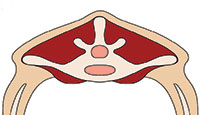
Score 3.0 – Vertical parts of the backbone are smooth and rounded; bone is only felt with pressure. Horizontal parts are smooth and well-covered; hard pressure is needed to feel them. Loin muscle is full with moderate fat cover.
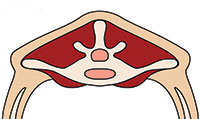
Score 4.0 – Vertical parts of the backbone resemble a raised line. Horizontal ends can’t be felt. Loin muscles are full, rounded with a thick covering of fat.
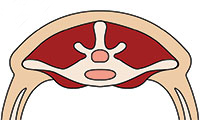
Score 5.0 – Both vertical and transverse parts of the backbone can’t be seen or felt, even with pressure. The backbone is lower than the fat on either side. Loin muscles are very full and covered with very thick fat.
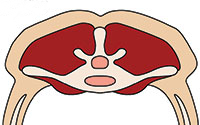
(Source: AHDB Beef & Lamb)
“Thin ewes need sufficient time and a very good diet (high-quality grass at about 6-8cm in height) to reach optimum BCS at tupping,” she adds.
But it is important to check them after a month to ensure they are gaining condition, she warns. And if they are not, consider culling or ask your vet to blood sample the very lean ewes to rule out underlying health issues such as Johne’s and maedi visna, fluke, or trace element deficiencies.
Fit ewes need access to reasonable pasture, or plenty of poorer pasture, to make sure they maintain condition, whereas fat ewes need to be moved on to poor pastures or grazed tightly on good land to allow them to lose some condition, she says.
“Ewes that are too fat at tupping time can also be problematic. Fatter ewes (above BCS 3.5) ovulate more eggs but have higher embryonic death leading to lower scanning percentages, but they can be very useful tool for managing pasture, and can hoover up worm larvae.”
